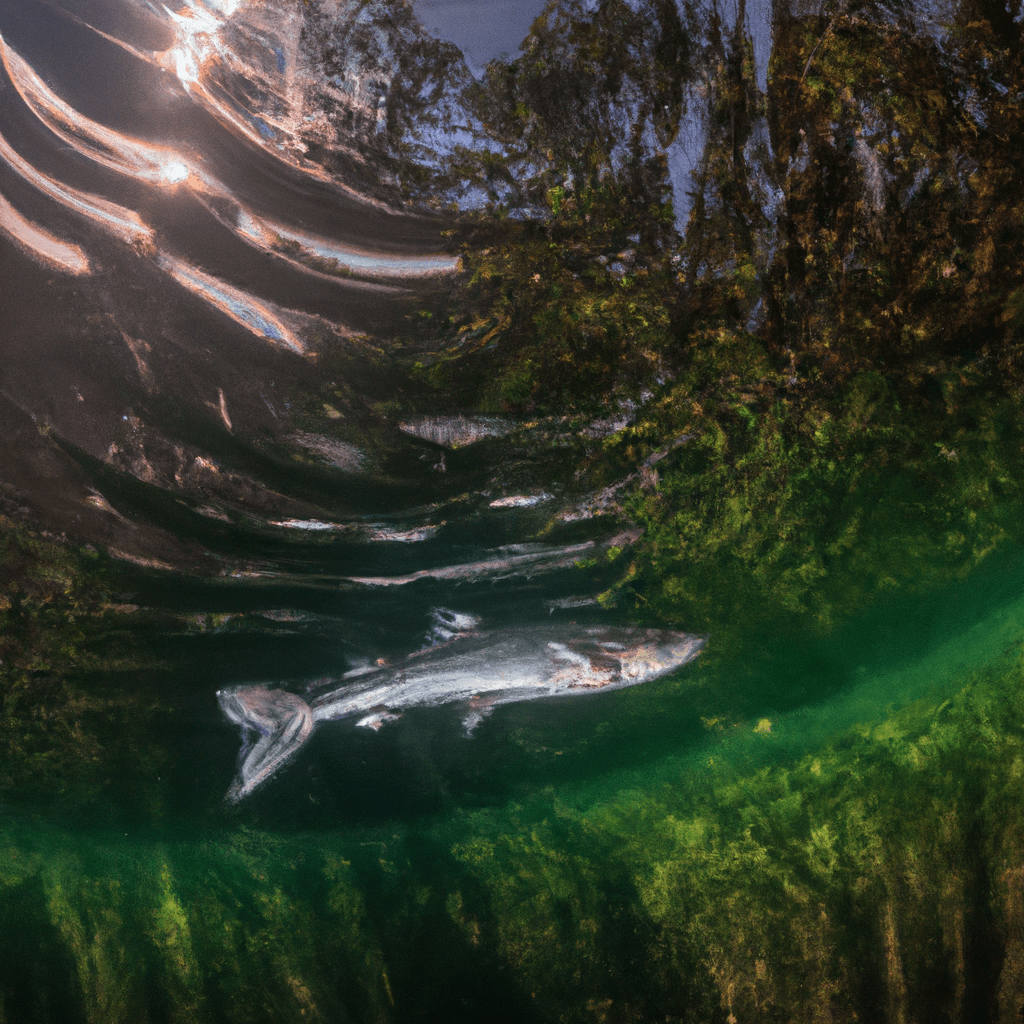Imagine yourself on a boat, the salty breeze brushing against your face as you wait for the perfect catch. But beneath the surface, the tarpon population is facing threats.
This is where you come in. As an angler, you have the power to make a difference in tarpon conservation. By adopting sustainable fishing practices and supporting conservation organizations, you can help protect these majestic creatures.
Join us as we explore the importance of conservation in tarpon fishing and the role you can play in safeguarding their future.
Threats to the Tarpon Population
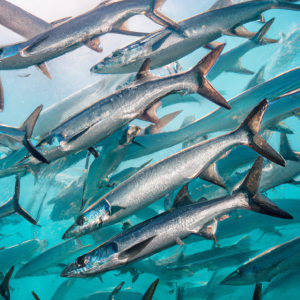
You should be aware of the significant threats facing the tarpon population.
Overfishing and habitat destruction pose serious risks to the survival of these iconic fish. Overfishing occurs when too many tarpon are caught from the wild, depleting their numbers to unsustainable levels. This is often driven by high demand for tarpon as game fish or for commercial purposes.
Additionally, habitat destruction, such as the degradation or loss of mangroves and seagrass beds, disrupts the tarpon’s natural environment. These habitats provide essential breeding and feeding grounds for the tarpon, and their destruction can lead to a decline in their population.
It’s crucial to address these threats through responsible fishing practices and conservation efforts to ensure the long-term survival of the tarpon population.
The Role of Anglers in Conservation
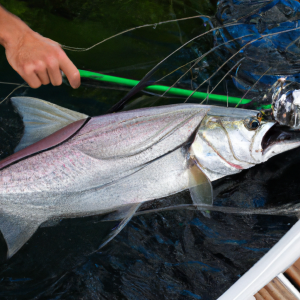
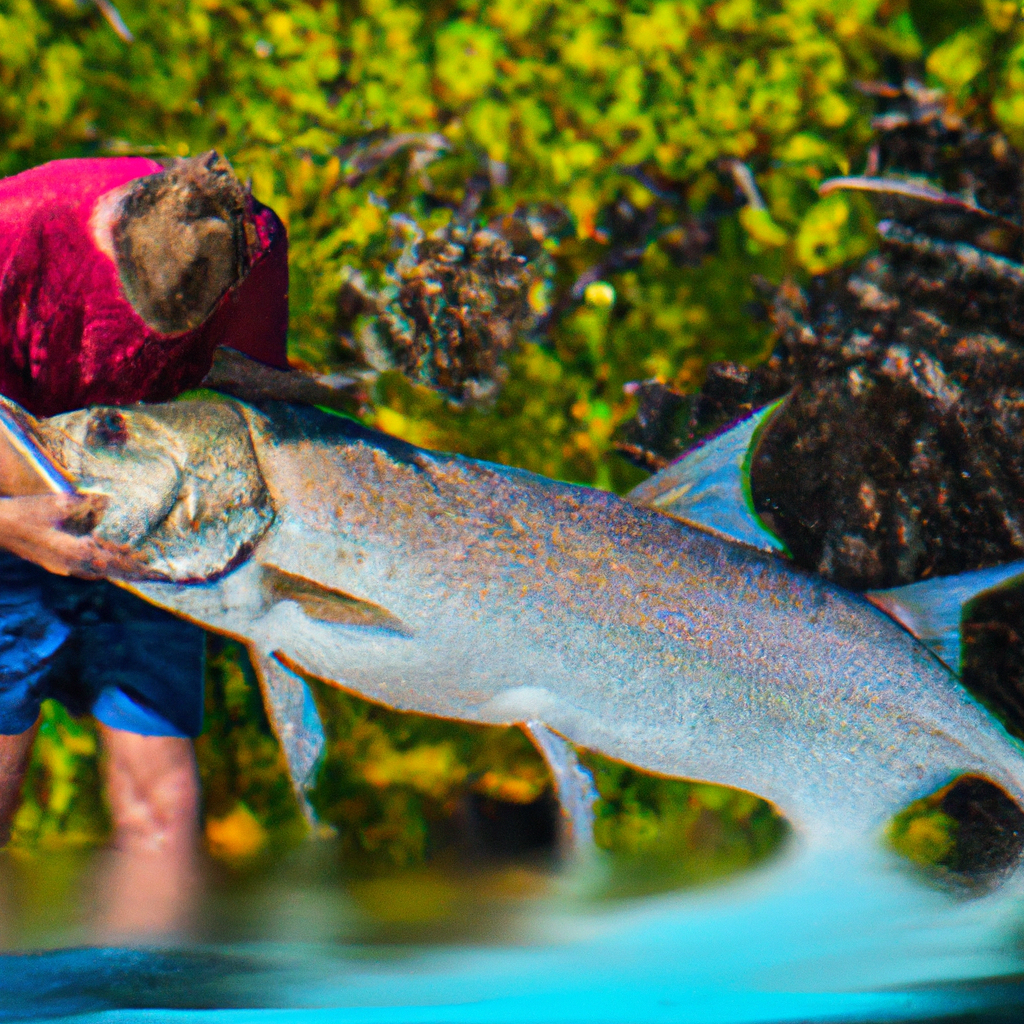
Anglers can actively contribute to the conservation of tarpon by regularly practicing catch and release. By following this practice, you can help protect the tarpon population and ensure its long-term sustainability.
Here are some ways in which anglers can play a vital role in conservation:
- Angler Education: Stay informed about best practices for handling and releasing tarpon. Learn about proper techniques to minimize stress and injury to the fish during the catch and release process.
- Community Involvement: Engage with local fishing communities and organizations that promote sustainable fishing practices. By actively participating in conservation efforts, you can help raise awareness and encourage others to follow suit.
- Data Collection: Report your tarpon catches to relevant research organizations or conservation groups. This data can contribute to scientific studies on tarpon populations, migration patterns, and overall health, aiding in better conservation management strategies.
Sustainable Fishing Practices for Tarpon
Practicing sustainable fishing techniques for tarpon is essential for the long-term health and conservation of the species. Ethical fishing practices, such as catch and release, play a crucial role in ensuring the sustainability of tarpon populations.
Catch and release involves safely returning the tarpon to the water after it has been caught, allowing it to continue its life cycle. This practice helps to minimize the impact on the tarpon population by reducing mortality rates and promoting the reproduction and growth of the species.
Research has shown that proper handling techniques, such as using barbless hooks and minimizing air exposure, can greatly increase the survival rates of released tarpon.
Conservation Organizations and Initiatives
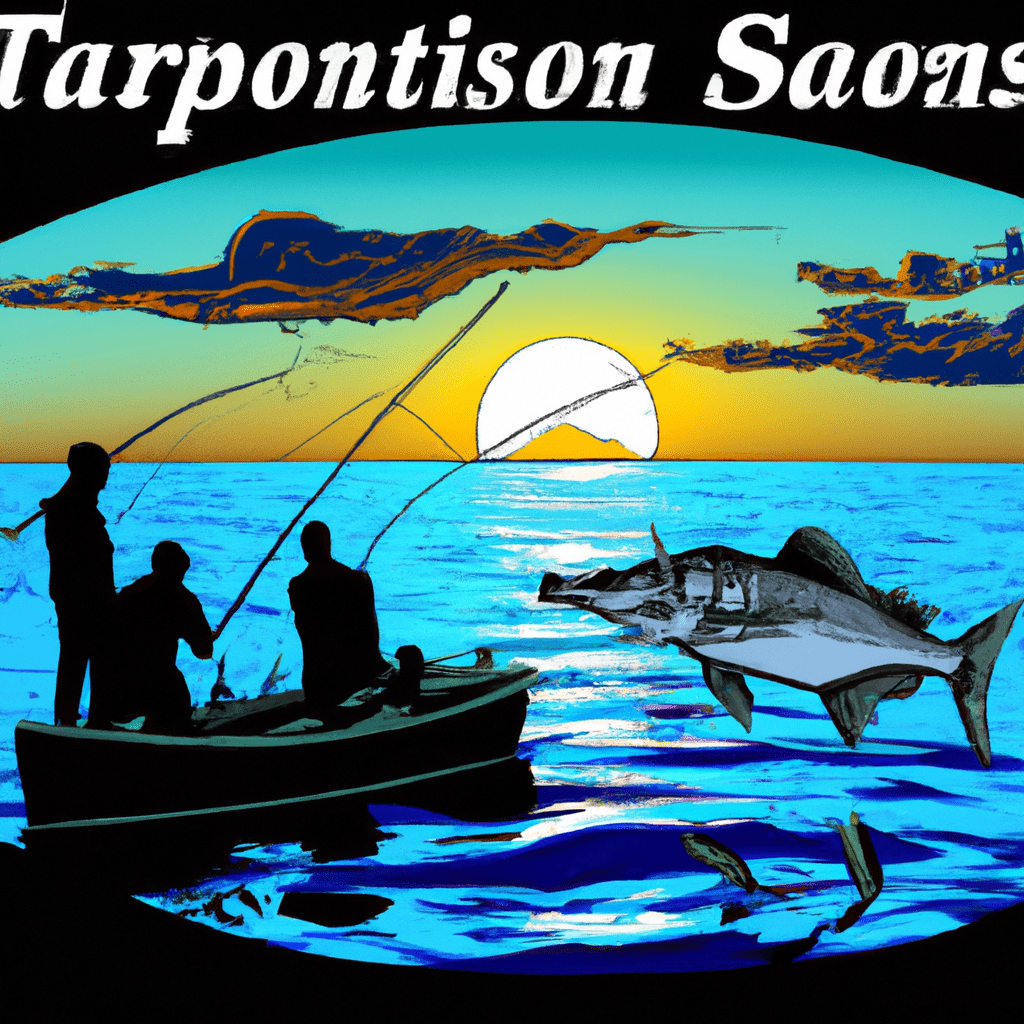
Fortunately, there are several conservation organizations and initiatives actively working to protect and preserve tarpon populations. These organizations play a crucial role in ensuring the long-term sustainability of tarpon fishing and the overall health of the ecosystem.
Here are a few noteworthy initiatives:
- Tarpon and Bonefish Trust: This organization focuses on research, conservation, and education related to tarpon and bonefish. They collaborate with scientists, anglers, and stakeholders to gather data and implement effective conservation strategies.
- Coastal Conservation Association (CCA): CCA is committed to the protection and restoration of marine resources. They work on habitat restoration projects, advocate for sustainable fishing practices, and engage in outreach and education programs.
- International Game Fish Association (IGFA): IGFA not only promotes ethical angling and responsible fishing practices but also supports scientific research and conservation efforts. They provide funding and grants for research projects, which contribute to the understanding and conservation of tarpon populations.
These organizations rely on funding sources such as donations, grants, and partnerships with businesses and government agencies. Their initiatives not only benefit tarpon populations but also have a positive impact on local communities by supporting tourism, creating jobs, and preserving the natural beauty of the region.
Educating and Raising Awareness About Tarpon Conservation
One of the most effective ways to promote tarpon conservation is by educating anglers and the general public about the importance of sustainable fishing practices. By raising awareness about the impacts of overfishing and habitat destruction, individuals can be encouraged to adopt responsible fishing methods and support conservation efforts.
Educational initiatives can include workshops, seminars, and online resources that provide information on catch-and-release techniques, proper handling and release of tarpon, and the importance of protecting their natural habitats.
Additionally, community engagement plays a vital role in tarpon conservation. By organizing events such as fishing tournaments, fundraisers, and volunteer programs, communities can contribute to raising funds for conservation organizations and actively participate in conservation activities.
Through education and community involvement, we can ensure the long-term survival of tarpon populations and preserve the health of their ecosystems.
Frequently Asked Questions
What Are the Main Factors Contributing to the Decline in the Tarpon Population?
The main factors contributing to the decline in the tarpon population are overfishing, habitat degradation, and climate change. These factors have resulted in a decrease in the number of tarpon and pose a threat to their survival.
How Can Anglers Actively Participate in Tarpon Conservation Efforts?
You can actively participate in tarpon conservation efforts by following angling regulations and supporting scientific research. These actions help protect the tarpon population and ensure their long-term survival.
Are There Specific Fishing Techniques or Practices That Should Be Avoided to Ensure the Sustainability of the Tarpon Population?
To ensure the sustainability of the tarpon population, avoid using harmful fishing techniques and practices. These can include using excessive force, using non-barbless hooks, and practicing catch and release improperly.
Which Organizations or Initiatives Are Actively Working Towards Tarpon Conservation?
There are several organizations and initiatives actively working towards tarpon conservation. They focus on conservation projects, research, and implementing government regulations and policies to ensure the sustainability of the tarpon population.
What Are Some Effective Strategies for Educating the Public and Raising Awareness About the Importance of Tarpon Conservation?
Effective outreach programs and engaging social media campaigns are crucial for educating the public and raising awareness about the importance of tarpon conservation. These strategies can help spread knowledge and inspire action for the preservation of this valuable species.

